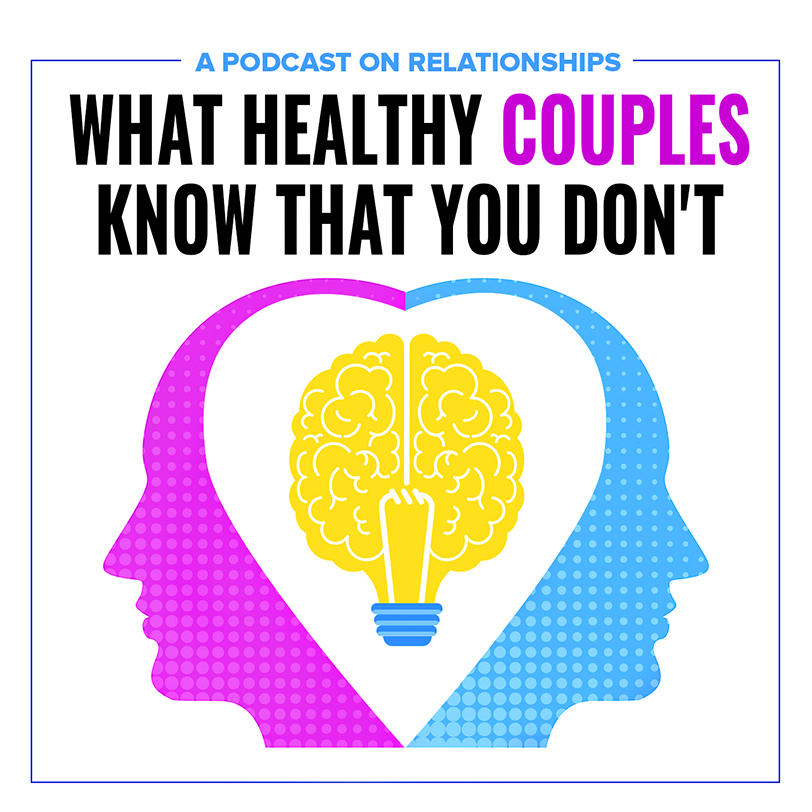 It is important not to be emotionally lazy and just go along for the ride. Do the work to sort through feelings and learn to make distinctions. Remember, feelings are not facts. Our culture gives men less permission to be in touch with their emotions. While women are often dismissed because of their emotions and labeled as hysterical or branded with being PMS. Clearly there is a cultural ambivalence towards emotions because they can be messy and hard to understand. It helps to become comfortable with the vocabulary of emotions. In 1979 in my work with incest victims, I patented a technique of writing 400+ feeling words on index cards. Clients would sort though the index cards and build a smaller pile of words that fit their feelings. Then they would use each card in the smaller pile to make sentences using that word to describe themselves.
It is important not to be emotionally lazy and just go along for the ride. Do the work to sort through feelings and learn to make distinctions. Remember, feelings are not facts. Our culture gives men less permission to be in touch with their emotions. While women are often dismissed because of their emotions and labeled as hysterical or branded with being PMS. Clearly there is a cultural ambivalence towards emotions because they can be messy and hard to understand. It helps to become comfortable with the vocabulary of emotions. In 1979 in my work with incest victims, I patented a technique of writing 400+ feeling words on index cards. Clients would sort though the index cards and build a smaller pile of words that fit their feelings. Then they would use each card in the smaller pile to make sentences using that word to describe themselves.
| For anyone lacking a strong emotional vocabulary, this technique offers the opportunity to learn and practice to fatten up their abilities. I often suggest that couples try this technique at home with each other in order to build communication skills.Feeling Vocabulary List (click above link for a list to view/print to use at home) |
Emotions: Each has a Purpose: 1. Love – offers connection. It is generous. 2. Fear – is learning “I don’t know.” It teaches us to ask questions and is one way we learn humility. It is important to remember that uncertainty is a huge part of life. 3. Grief/Sadness – makes us all smaller. Returns us to a sense of privacy in being alone with ourselves. Reminds us of how fragile our lives are. Time changes the sorrow, so eventually it takes up less space in our hearts. 4. Anger – if it is aimed at someone, anger is much more hurtful. Being angry is different than wanting to hurt someone. It draws a line in the sand. Separates us from others. Can be constructive disagreement or destructive. The healthy side of anger defines you as important, the ugly side of anger is to be too self-important. Conflict is a sign of growth. Remember, challenge can be an affirmation. 5. Hate – People hate when anger is not a constructive working part of their emotional tool box. It can be destructive and becomes an attempt to eliminate the other. There is still a powerful connection. 6. Gratitude – knowing what is enough. Appreciating blessings. 7. Sex – the function is pleasure and sensuality. 8. Joy – the function is to feel free. Get Fat with Joy. Fun can be a substitute for real joy. 9. Healthy Guilt – a reminder of obligation that is due. Unhealthy Guilt – a pile of resentments that are lurking in the background, waiting to be cashed in. Scroll further down to read more on guilt. 10. Humor – makes the hard parts of life more bearable. Evolves into being even more precious as we age. A release. Humor is an alternative to despair. 11. Letting Go – Moving on. 12. Excitement – proves energy to do new things. It requires expansion. 13. Confusion – crucial to tolerate. Important to the beginning of change. 14. Embarrassment – different than the heavy depths of shame. This can often be secret delight. 15. Shame – we are supposed to be pinched by shame so that we learn enough to do it differently next time. We are not supposed to drown in this emotion. Shame comes from outside of us. We are afraid to be seen by others. A sense of belonging is an antidote to shame. 16. Pain – something is off-kilter. Know you will survive it and it will make you stronger. One of the strengths of Buddhism is a profound acceptance of pain and suffering as a part of life. Making pain bearable is part of our life’s work. 17. Jealousy – can be a guide post to your wants. Also can evolve into ugly unreasonable selfishness. 18. Passion – “That was the singular gift of passion: it eradicated fear” from The Rules of Engagement by Anita Brookner 19. Bitterness – Too many disapointments, not enough hope. This is one of the most dangerous of emotions because, it is possible to be stuck in bitterness for decades. Think of bitterness as a warning signal like the robot in the 1950’s TV show, Lost in Space, repeating “Danger, Will Robinson, Danger.” Indulging emotions leads to poor judgment. Poor judgment matters because you set yourself up to waste your life choices. Emotions are a physical experience. Notice the ways different emotions play out in your body. Do not disconnect your emotions from experiencing your body more fully. Emotions Revealed, Second Edition: Recognizing Faces and Feelings to Improve Communication and Emotional Life Polarities in Emotions: Feelings travel together with their opposites. If you feel lopsided in an emotion and want more movement, ask yourself what is the other side, the polarity. The easiest duet to relate to is fear and excitement. Doing anything brand new always offers both emotions. You may have trained yourself to only pay attention to one side. It’s time to relearn that both are available. Here are other feelings and their possible polarities. Owning both creates a greater range of possibilities.
|
Anger |
< – – – – – – – – > |
Hurt |
|
Trust |
< – – – – – – – – > |
Betrayal |
|
Loss/Sadness |
< – – – – – – – – > |
Joy/Fullness |
|
Boredom |
< – – – – – – – – > |
Creativity/Curiosity |
|
Shame |
< – – – – – – – – > |
Belonging |
|
Disappointment |
< – – – – – – – – > |
Satisfaction |
|
Being Stuck |
< – – – – – – – – > |
Taking Action |
|
Self Interest |
< – – – – – – – – > |
Gratitude |
|
Stingy |
< – – – – – – – – > |
Generous |
|
Intimacy |
< – – – – – – – – > |
Distance |
|
Self-Obsessed |
< – – – – – – – – > |
Social Duty |
|
Desperate |
< – – – – – – – – > |
Lucky |
There is comfort when you have the full range available within yourself, and life is so much more interesting. For example when self help groups like AA offer individuals a sense of belonging this reduces the individual experience of shame. Emotional Honesty Requires Understanding More About Anger and a Willingness to Repair Anger: “Holding on to anger is like grasping a hot coal with the intent of throwing it an someone else; you are the one who gets burned.” – Buddha Anger is a much maligned emotion, because most people go from silence to intense outrage. Speaking more authentically, describing hurts and wants in smaller doses is not the norm. In our culture, people go from 0 to 60, collecting enough gripes until they are ready to be cashed in. 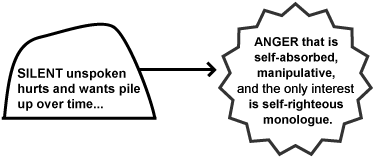 In between the silence & the KA-Boom are smaller opportunities to speak up. You may find yourself feeling annoyed or irritated which are teaching moments to let someone else know who you really are or what you want. Learning to say more truth in smaller doses requires the courage to face your fears. Anger is a way to erase vulnerability. We really prefer to shout rather than expose our wants or hurts out loud. We love the stingy “safety” of keeping them locked up inside of ourselves. Our culture does not support being vulnerable in relationships. (When was the last time you admitted to being sorry?) The risk of being more emotionally honest is the risk to be more authentic. Didn’t Oscar the Grouch seem more honest than the other characters on Sesame Street? He wasn’t choiceful enough, so his anger was too much of a personality style. Choicefulness is what makes us mentally healthy. The excuses people use internally to avoid and deflect anger are experienced by all of us: “I don’t want to hurt the other.” On an old television episode of Homicide, the cop asks the 80-year-old murderer, “I don’t understand, why didn’t you just divorce your wife instead of murdering her?” He responds, “I didn’t want to hurt her feelings.” Emotional honesty requires a balancing act, an internal geiger counter that incorporates both of these positions:
In between the silence & the KA-Boom are smaller opportunities to speak up. You may find yourself feeling annoyed or irritated which are teaching moments to let someone else know who you really are or what you want. Learning to say more truth in smaller doses requires the courage to face your fears. Anger is a way to erase vulnerability. We really prefer to shout rather than expose our wants or hurts out loud. We love the stingy “safety” of keeping them locked up inside of ourselves. Our culture does not support being vulnerable in relationships. (When was the last time you admitted to being sorry?) The risk of being more emotionally honest is the risk to be more authentic. Didn’t Oscar the Grouch seem more honest than the other characters on Sesame Street? He wasn’t choiceful enough, so his anger was too much of a personality style. Choicefulness is what makes us mentally healthy. The excuses people use internally to avoid and deflect anger are experienced by all of us: “I don’t want to hurt the other.” On an old television episode of Homicide, the cop asks the 80-year-old murderer, “I don’t understand, why didn’t you just divorce your wife instead of murdering her?” He responds, “I didn’t want to hurt her feelings.” Emotional honesty requires a balancing act, an internal geiger counter that incorporates both of these positions:  Two examples of imbalance that are common in relationships. Women will often retroflect and bury their wants and needs to such an extent that they will become depressed in a marital relationship. They are lopsided in not wanting to hurt others and end up erasing themselves. Men will often take care of their own needs and ignore the consequences to their spouse. Both of these positions are saturated in short-term thinking and will not work for the long haul. It is a more thoughtful strategy that incorporates both of these as a way to create the infrastructure of communication in a relationship. This requires greater flexibility, adaptability, and the willingness to embrace complexity. Choicefully sharing greater emotional range creates a depth to a relationship. In the long term this means that you really know each other instead of just bumping up against the agreeable facade. Anger in smaller doses adds spice to a relationship; it keeps things interesting. Overreaction is scary and overwhelming, while being irritated or annoyed is the stuff of conversations and true dialogue. A relationship without anger can be as bland as a meal without herbs and spices. Many partners go along in silence because they feel it is easier to submit to one voice deciding instead of the messiness of two voices solving conflict. This messiness creates the same atmosphere that we bargain for when we choose to live in a democracy. The nature of the beast in democracy is to negotiate so that both sides win and lose. It takes a great deal of work to hear all of the voices, which is the same work that we do in a family, a family in which more truth can be spoken. Risking disagreement and doing the work of negotiating produces long-term results. There are two choices with anger:
Two examples of imbalance that are common in relationships. Women will often retroflect and bury their wants and needs to such an extent that they will become depressed in a marital relationship. They are lopsided in not wanting to hurt others and end up erasing themselves. Men will often take care of their own needs and ignore the consequences to their spouse. Both of these positions are saturated in short-term thinking and will not work for the long haul. It is a more thoughtful strategy that incorporates both of these as a way to create the infrastructure of communication in a relationship. This requires greater flexibility, adaptability, and the willingness to embrace complexity. Choicefully sharing greater emotional range creates a depth to a relationship. In the long term this means that you really know each other instead of just bumping up against the agreeable facade. Anger in smaller doses adds spice to a relationship; it keeps things interesting. Overreaction is scary and overwhelming, while being irritated or annoyed is the stuff of conversations and true dialogue. A relationship without anger can be as bland as a meal without herbs and spices. Many partners go along in silence because they feel it is easier to submit to one voice deciding instead of the messiness of two voices solving conflict. This messiness creates the same atmosphere that we bargain for when we choose to live in a democracy. The nature of the beast in democracy is to negotiate so that both sides win and lose. It takes a great deal of work to hear all of the voices, which is the same work that we do in a family, a family in which more truth can be spoken. Risking disagreement and doing the work of negotiating produces long-term results. There are two choices with anger: 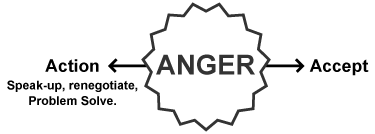 If the tension or conflict is channeled through respect, then you can acknowledge what’s important to the other person in the midst of knowing what’s important to yourself. This creates a complicated elegance and a more authentic exchange between two people. For example: one partner likes to tile the floor quickly and get the job done. The other partner would rather go more slowly and carefully because he or she will notice every imperfection of a quick job. What’s important is that each person knows this is true for each other and both agree to make a choice instead of fighting for the reason that someone has to be right and someone has to be wrong. It is healthy to have conflict worked out where both people have a voice. HURT: The Vulnerable Side of Anger: Hurt is the soft, vulnerable, more exposed side of hardened anger. There is no other way to soften hurt except to talk and talk and talk and talk about it. It was so hard on World War II veterans because their style in life was not to talk about the unbearable pain they witnessed. It was hard on Vietnam Vets when no one was interested in their stories. Emotional honesty requires being able to be vulnerable and being choiceful about who to share with. Books to Help with Anger:
If the tension or conflict is channeled through respect, then you can acknowledge what’s important to the other person in the midst of knowing what’s important to yourself. This creates a complicated elegance and a more authentic exchange between two people. For example: one partner likes to tile the floor quickly and get the job done. The other partner would rather go more slowly and carefully because he or she will notice every imperfection of a quick job. What’s important is that each person knows this is true for each other and both agree to make a choice instead of fighting for the reason that someone has to be right and someone has to be wrong. It is healthy to have conflict worked out where both people have a voice. HURT: The Vulnerable Side of Anger: Hurt is the soft, vulnerable, more exposed side of hardened anger. There is no other way to soften hurt except to talk and talk and talk and talk about it. It was so hard on World War II veterans because their style in life was not to talk about the unbearable pain they witnessed. It was hard on Vietnam Vets when no one was interested in their stories. Emotional honesty requires being able to be vulnerable and being choiceful about who to share with. Books to Help with Anger: 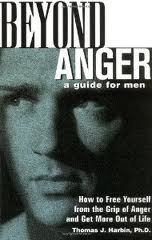 Beyond Anger: A Guide for Men: How to Free Yourself from the Grip of Anger and Get More Out of Life by Thomas Harbin
Beyond Anger: A Guide for Men: How to Free Yourself from the Grip of Anger and Get More Out of Life by Thomas Harbin
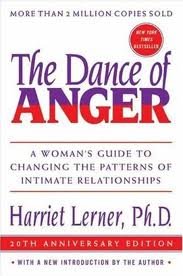 The Dance of Anger: A Woman’s Guide to Changing the Patterns of Intimate Relationships by Harriet Lerner
The Dance of Anger: A Woman’s Guide to Changing the Patterns of Intimate Relationships by Harriet Lerner
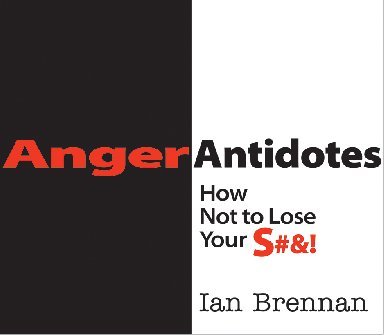 Anger Antidotes: How Not to Lose Your S#&! by Ian Brennan
Anger Antidotes: How Not to Lose Your S#&! by Ian Brennan




